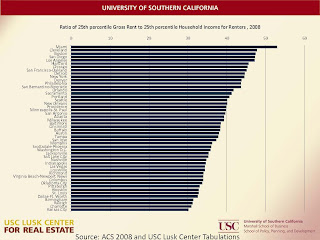There are a few large presumptions here: that wealth is a function of skill, and that skill is the most important criterion for determining whether one "deserves" resources. I have no doubt that there is a strong correlation between skill and wealth, but I also have no doubt that a regression where wealth is on the left hand side and skill is on the right would have a large residual.All this administration has done, in effect, is additionally regulate banks and businesses (in the middle of a deep recession) and transfer resources from high skill to low skill. That's what the health care plan and the extension of unemployment benefits has done.
But even if skill translated perfectly to wealth, I am uncomfortable with the idea that the unskilled are unworthy of having a decent standard of living, particularly in a country as rich as the United States. I also think that income distribution data from OECD calls into serious question whether rewarding the "highly skilled" leads to better outcomes for the lower income parts of society. Thus I recoil at the idea that extending unemployment insurance periods in times when there are far more job seekers than jobs is a good idea.
That said, the hard-headed aspects of economics do lead to important insights. For example, when the country is at full-employment (or something like it), the duration of unemployment insurance should be limited, because we do want people to work. Similarly, we should always make it better for people to work than to receive government assistance. I could also go on about the evils of rent control, etc.
This is where I feel conflicted about my discipline on a regular basis. So much of what we put out there strikes me as being on its face inhumane and arrogant. Yet I would hate to see what policy would look like in our absence.
























